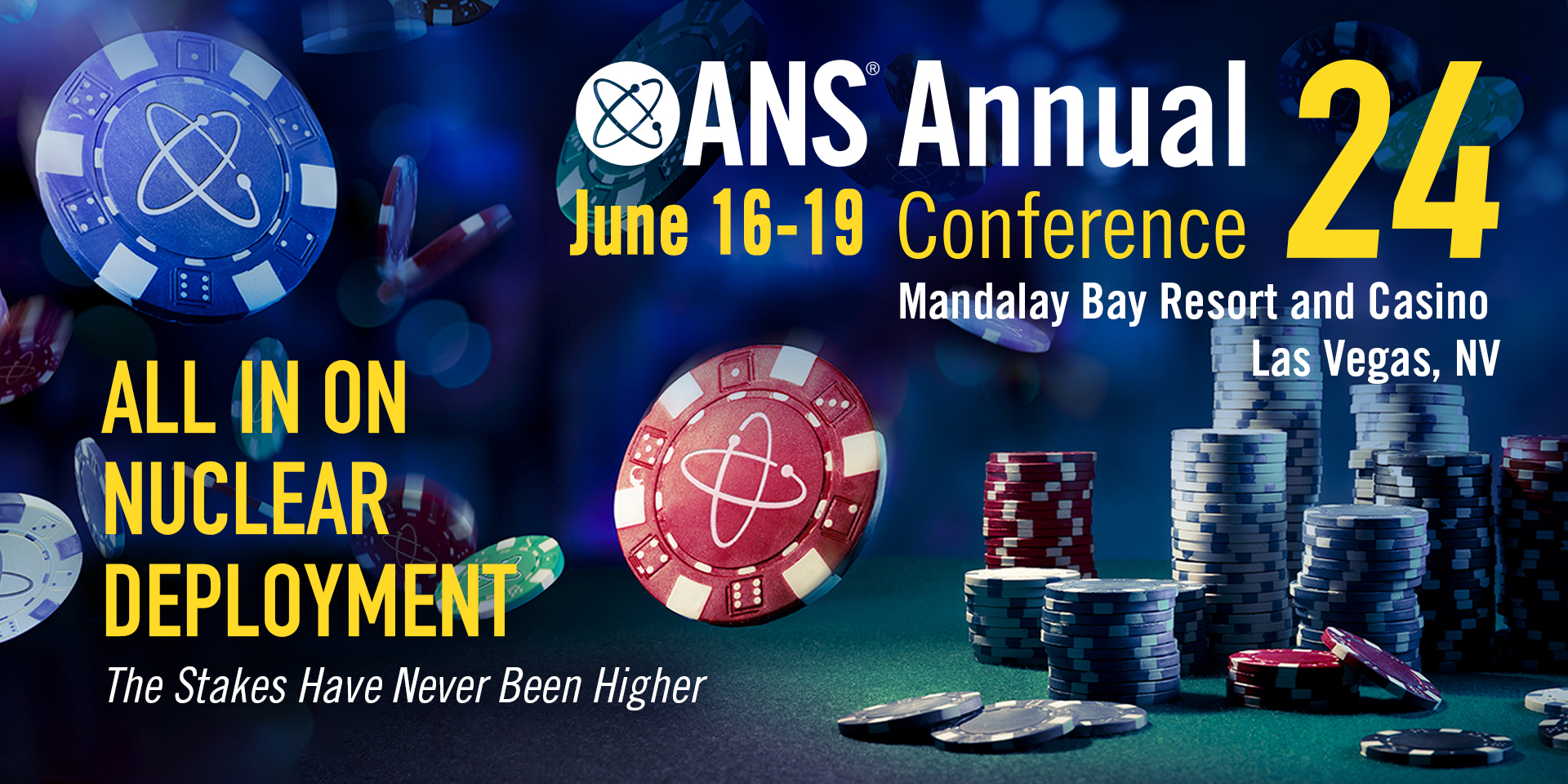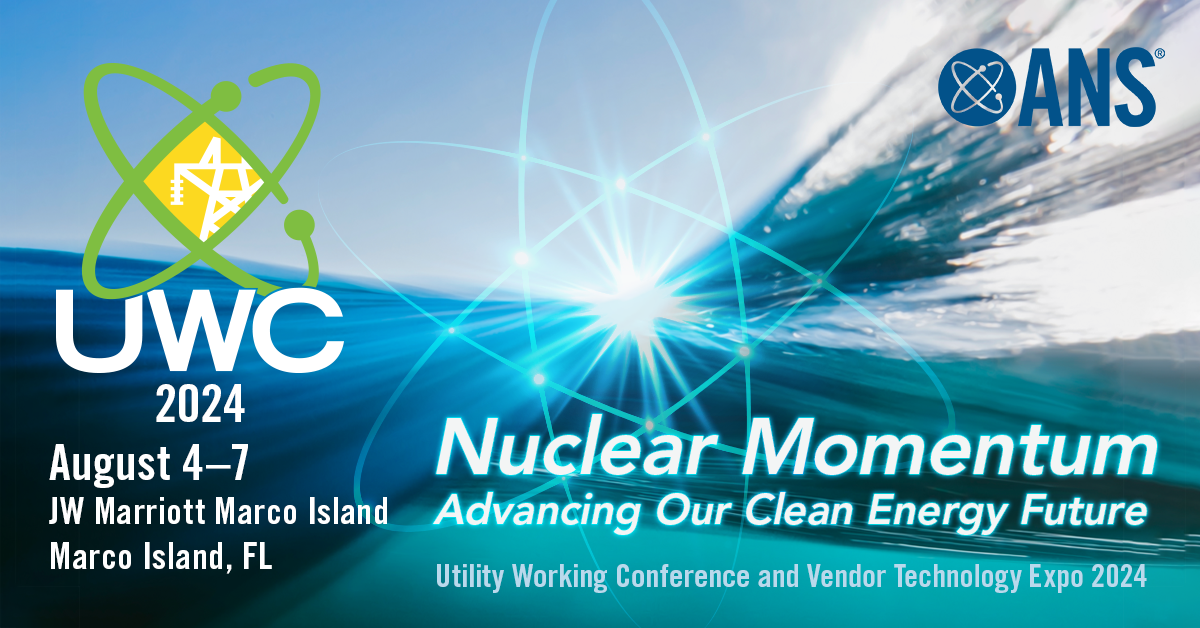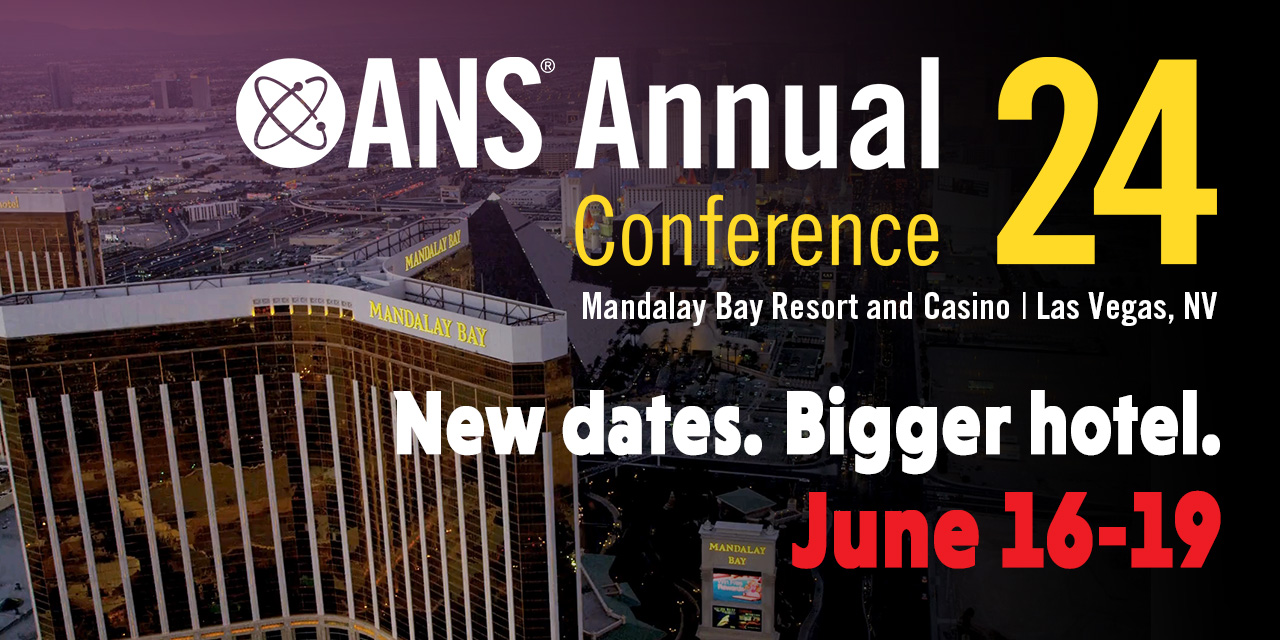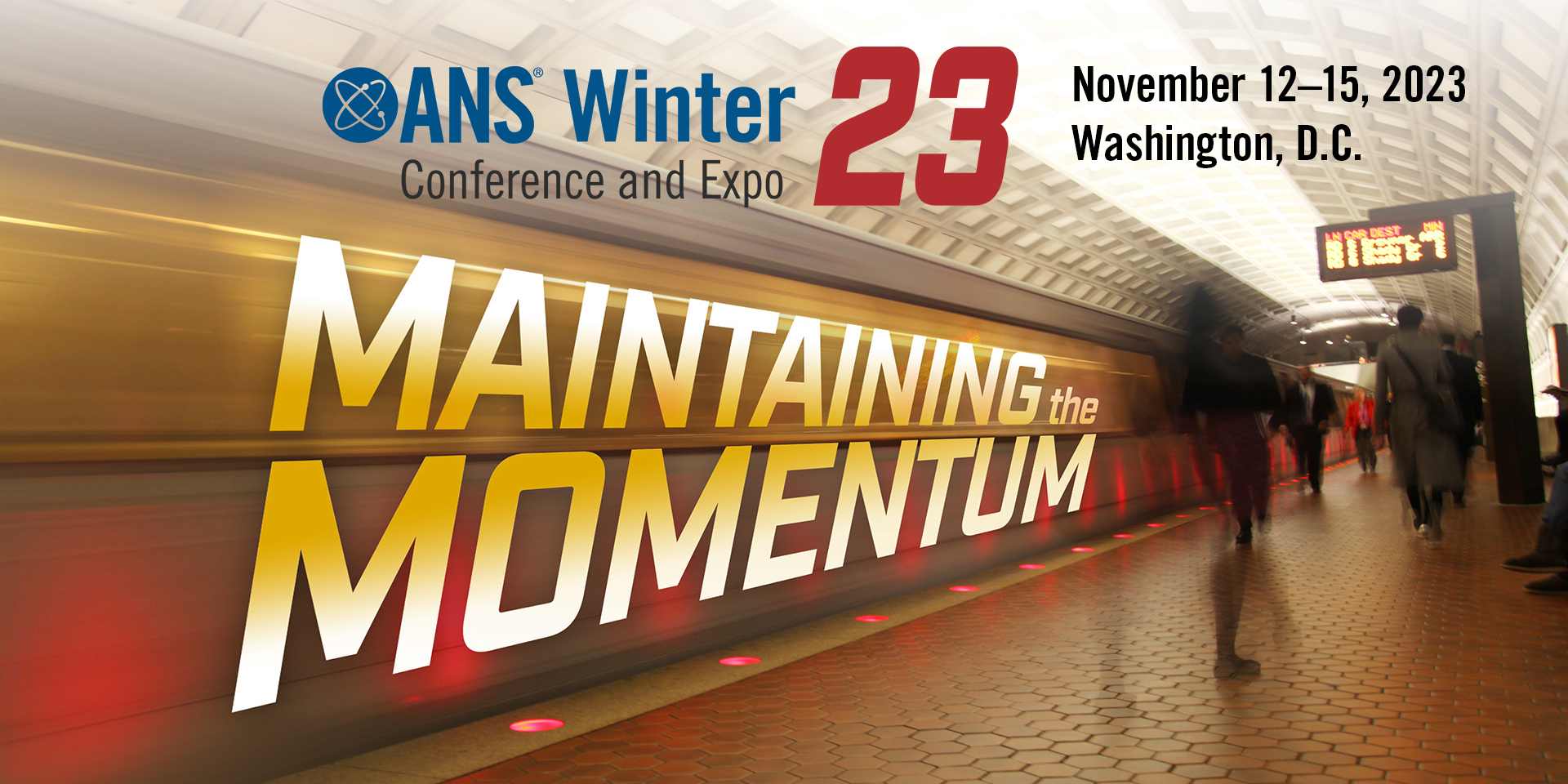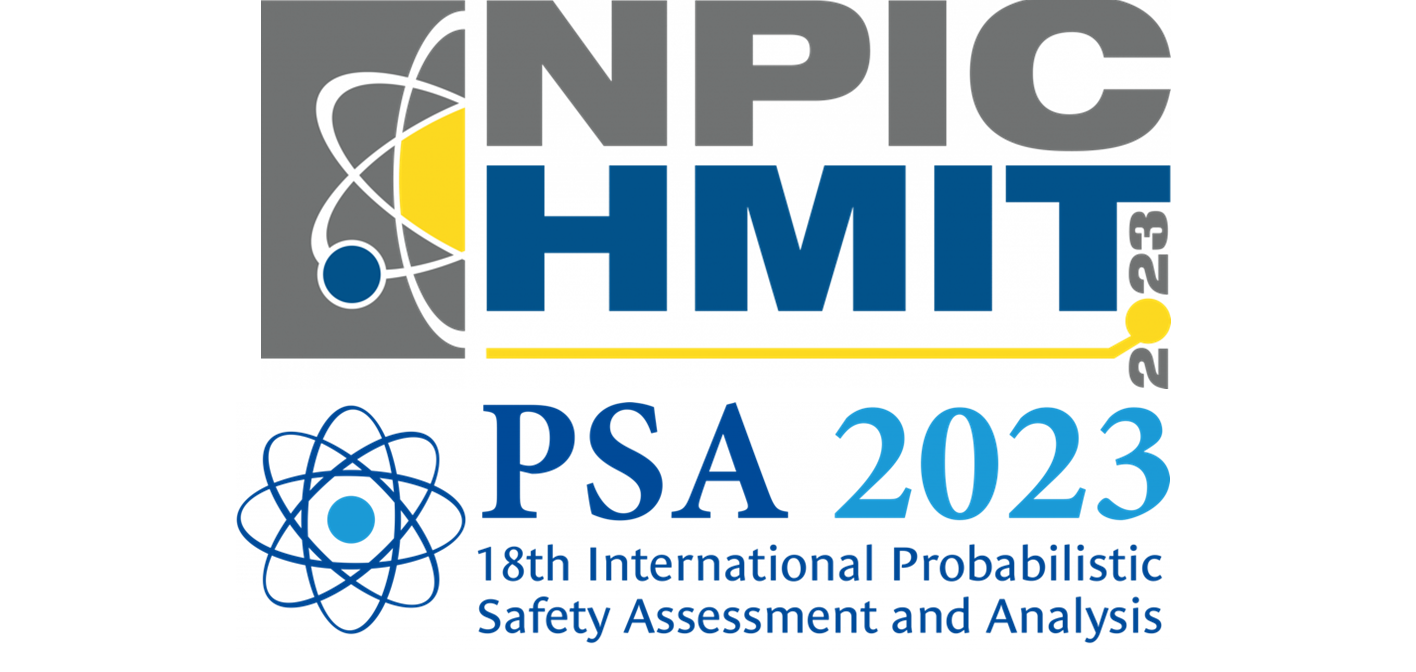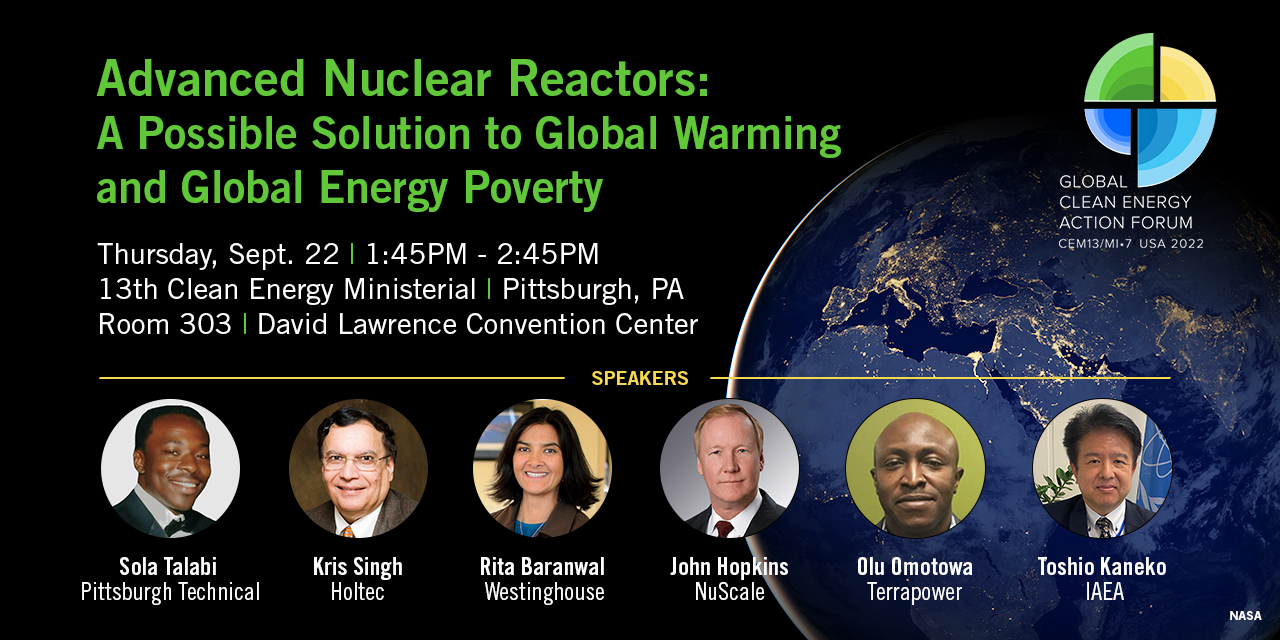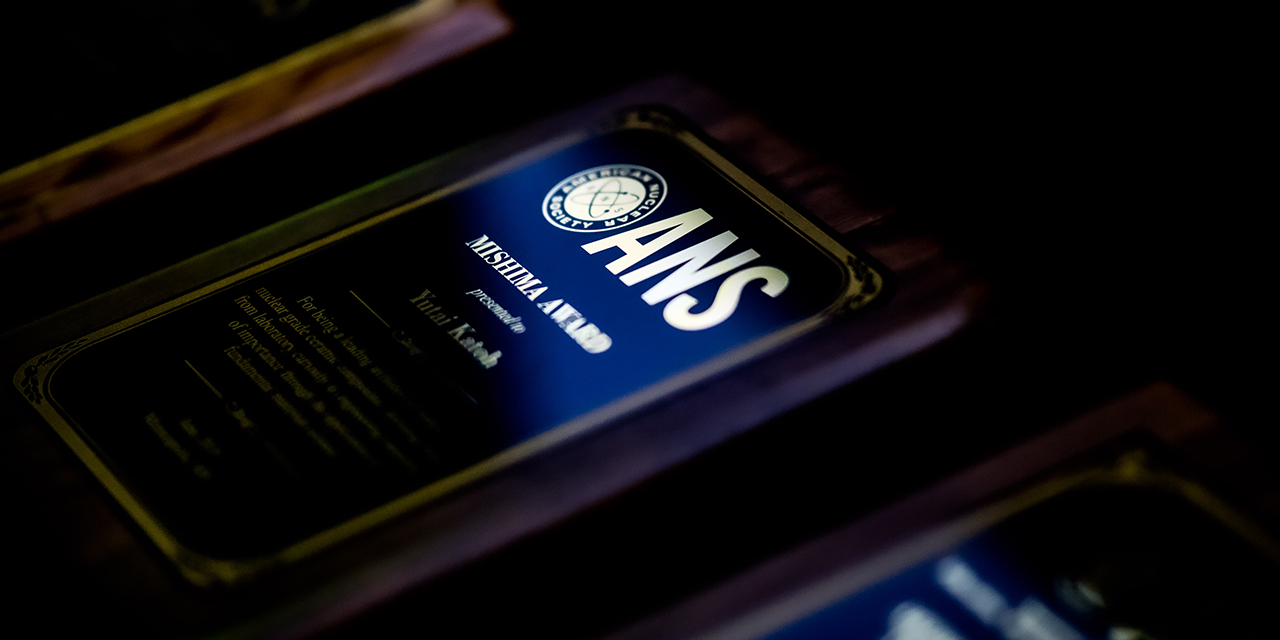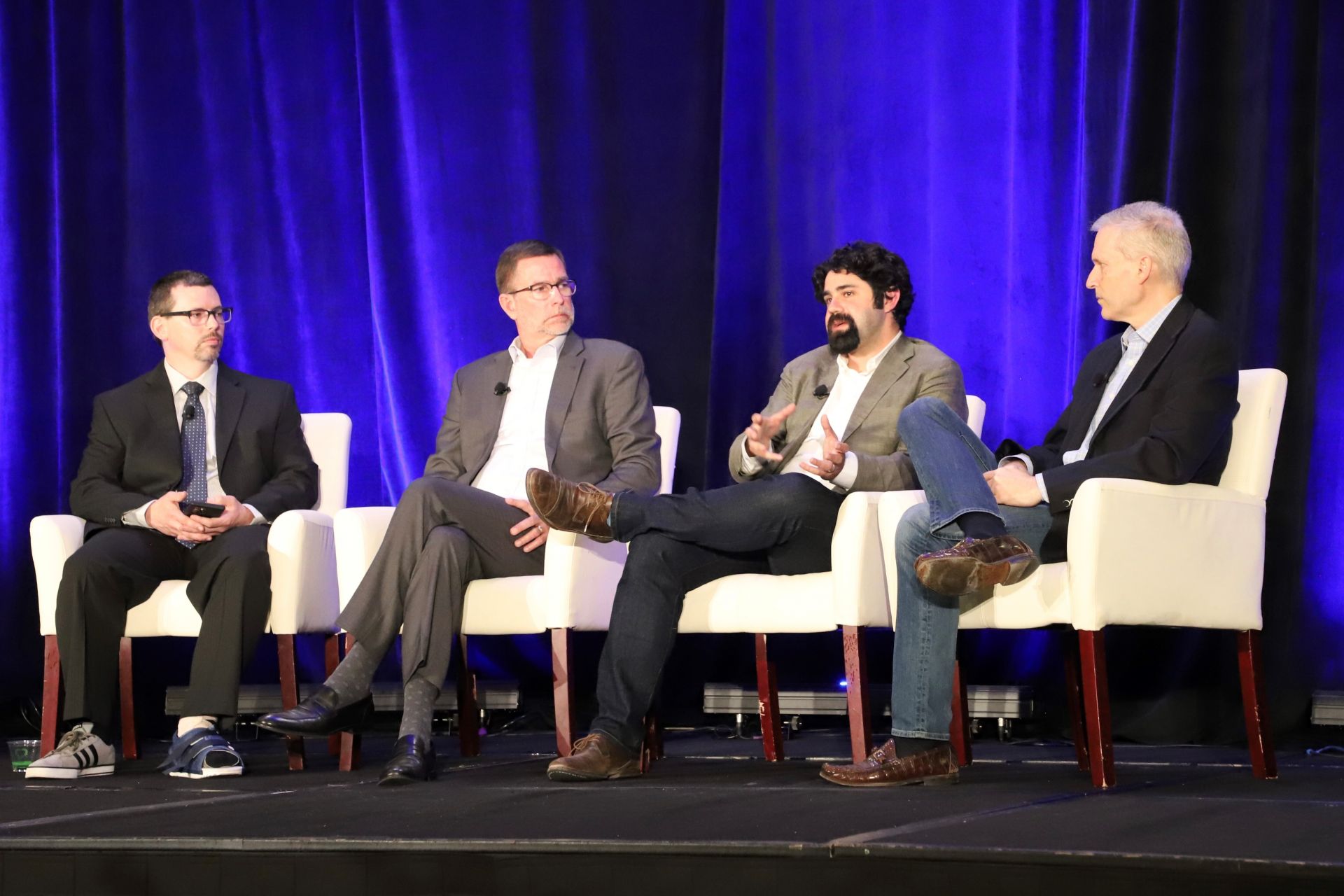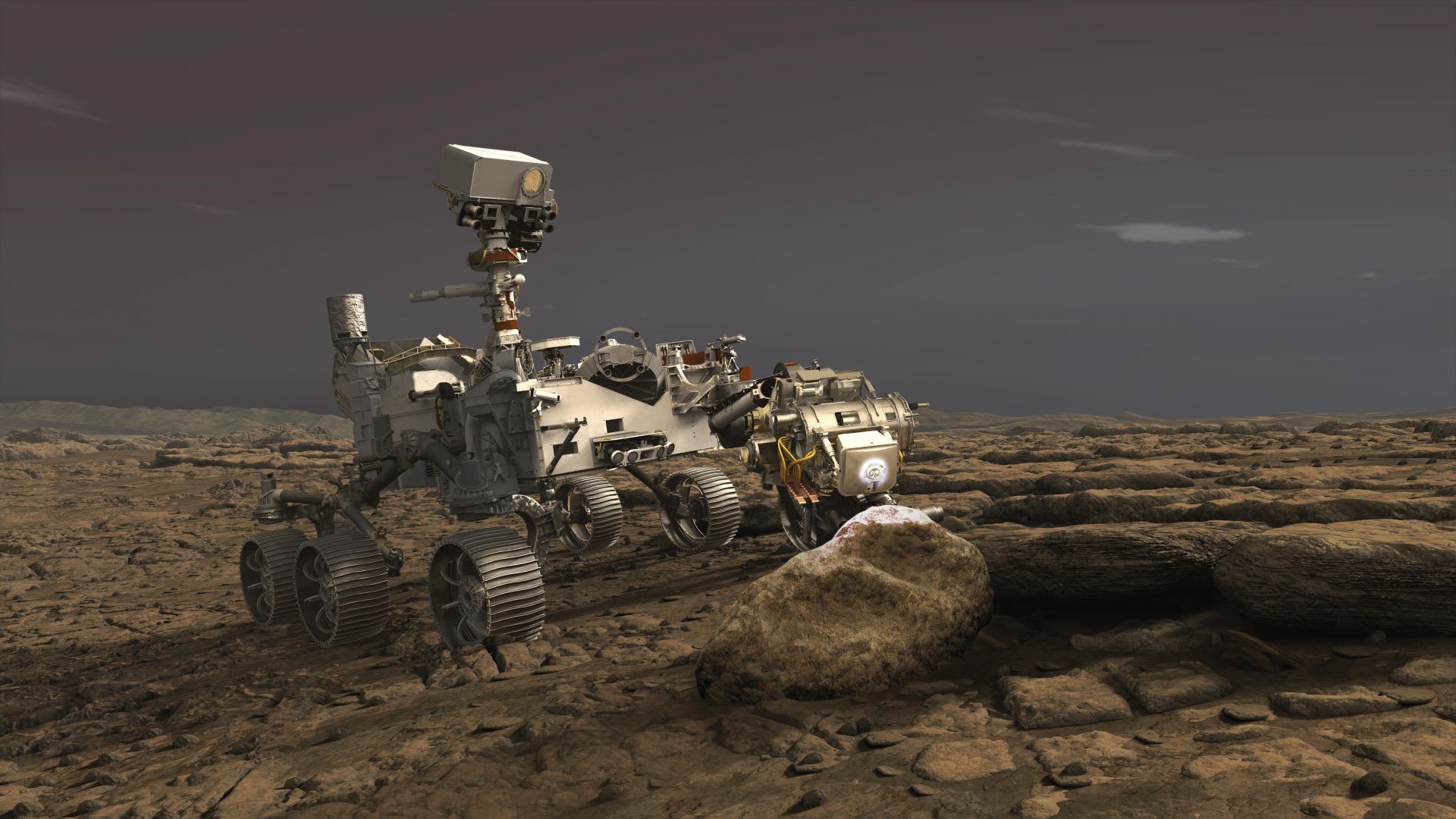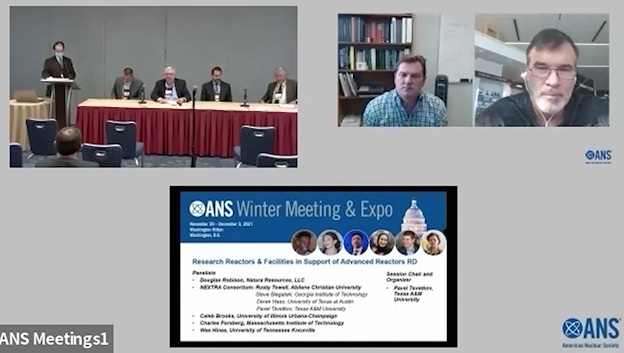From left: Christina Leggett (Booz Allen Hamilton), Morris Hassler (IB3 Global Solutions), Everett Redmond (Oklo), Andy Griffith (DOE-NE), Ben Jordan (Centrus), Stephen Long (GLE), and Magnus Mori (Urenco).
Whether commercial demand for high-assay low-enriched uranium (HALEU) fuel ultimately falls at the high or low end of divergent forecasts, one thing is certain: the United States is not ready to meet demand, because it currently has no domestic HALEU enrichment capacity. But conversations happening now could help build the commercial HALEU enrichment infrastructure needed to support advanced reactor deployments. At the 2022 American Nuclear Society Winter Meeting, representatives from three potential HALEU enrichers, the government, and industry met to discuss their timelines and challenges during “Got Fuel? Progress Toward Establishing a Domestic US HALEU Supply,” a November 15 executive session cosponsored by the Nuclear Nonproliferation Policy Division and the Fuel Cycle and Waste Management Division.
Session moderator Scott Hsu (left) led a discussion with (from left) Troy Carter, Kathy McCarthy, Artem Smirnov, Satoshi Konishi, and Jane Hotchkiss during an ANS Annual Meeting executive session on “The New Fusion Outlook.”
A “bold decadal plan” to accelerate fusion research, development, and demonstration in partnership with the private sector emerged from a March 2022 White House Fusion Summit and inspired the June 14 ANS Annual Meeting executive session titled “The New Fusion Outlook.” Moderator Scott Hsu, who is leaving a role as a program director for the Department of Energy’s Advanced Research Projects Agency–Energy (ARPA-E) to become a senior adviser to the DOE’s undersecretary for science and innovation as well as lead fusion coordinator for the DOE, ably led a panel of fusion stakeholders representing universities, national laboratories, private fusion companies, and public policy and communication. The discussion intended to bring attendees with fission experience up to speed on the rapidly accelerating area of fusion energy and explore how the fusion energy community can work toward a unique path for fusion energy regulation and public engagement.
Panelists (from left) Adam Stein, Jon Ball, Mike Laufer, and Michl Binderbauer during the Breaking Through: Assessing the Current State and Prospects of Nuclear Innovation in the Race to Decarbonize session at the ANS Annual Meeting.
If nuclear innovators are in a race to decarbonize, it is a race with one finish line—affordable, clean, and reliable power—and many ways to get there. Over 40 fission developers and 20 fusion developers are in the running, and while attendees of the June 13 ANS Annual Meeting executive session on Breaking Through: Assessing the Current State and Prospects of Nuclear Innovation in the Race to Decarbonize heard from representatives of just three of those companies, they presented very different designs and deployment approaches, aptly reflecting the broader diversity of nuclear power innovation.
Session chair Adam Stein, director of nuclear energy innovation at the Breakthrough Institute, welcomed representatives from an advanced non–light water reactor developer (Mike Laufer, Kairos Power), a small modular light water reactor developer (Jon Ball, GE Hitachi Nuclear Energy), and a fusion power developer (Michl Binderbauer, TAE Technologies). Together they explored the challenge of engineering a significant commercial scale-up of advanced nuclear technology by the end of the decade, tackling questions of cost, schedule, supply chain, regulation, and more.
NETS participants are credited with helping relaunch the nation’s domestic production of Pu-238 to fuel the Mars Perseverance rover. (Photo: NASA)
Connecting nuclear engineers and scientists with space exploration missions has been a focus of the American Nuclear Society’s Aerospace Nuclear Science and Technology Division since its creation in 2008. One of the main ways those connections are made is through the Nuclear and Emerging Technologies for Space (NETS) conference, which the division supports in conjunction with the National Aeronautics and Space Administration.
UIUC Student Section members. (Photo: UIUC NPRE)
The University of Illinois at Urbana-Champaign ANS Student Section is preparing to host the 2022 ANS Student Conference, to be held April 14–16 on the university campus. Registration is now open for the first in-person ANS student conference since 2019.
A screen shot from the “Research Reactors in Support of Advanced Reactor R&D” session at the 2021 ANS Winter Meeting and Technology Expo.
First-of-a-kind research reactors, demo reactors, and research facilities are being developed and sited on university campuses to support the broader deployment of advanced reactors. At the 2021 ANS Winter Meeting and Technology Expo, during a December 2 panel session titled “Research Reactors in Support of Advanced Reactor R&D,” several of these planned projects were discussed in detail—including a molten salt reactor in Texas and a high-temperature gas–cooled reactor in Illinois.
The session was sponsored by the Reactor Physics Division and organized and chaired by Pavel Tsvetkov, of Texas A&M University. A video of the session is available to registered Winter Meeting attendees.
